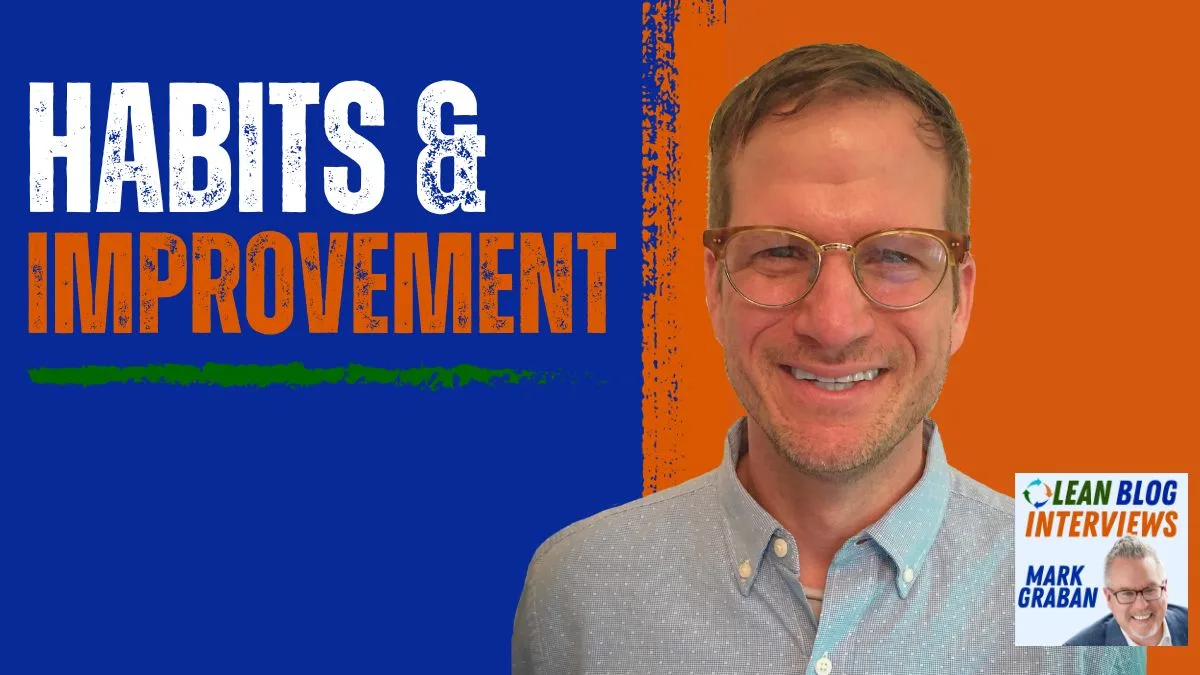As Mark Graban stated in a recent post, “People fear or assume that a factory is…mindless, monotonous, repetitive…” These sentiments may come from observation of one aspect of lean and manufacturing: rules and related rewards.
There is the common (mis-)perception that all manufacturing work is like an assembly-line; the work is all standardized and people are rewarded for following rules. By following rules in such an environment, one's autonomy is lower. If there is one thing that knowledge workers (like doctors and nurses) don't want to lose, it's their autonomy. Therefore, some may think that lean = loss of ALL my autonomy = bad!
Of course, this isn't the case in all situations. The rules and rewards that can be implemented as a part of lean healthcare have been found to be very beneficial in the right situations. One of the most common examples of the appropriate use of standardization is using 5S for managing supplies. The average person would likely be able to recognize, “Having a usual place to put things makes them easier to find.” Not having autonomy here makes work easier and more effective.
However, let's imagine that there are standards set for patient care, but there is a situation that requires a different action. Strictly following the standard may have an adverse effect on patient outcomes. Here, the provider needs a certain level of autonomy to do the right thing.
It is important to communicate the PROPER conditions under which rules and rewards positively impact performance and patient outcomes. This is true for lean in any industry, from manufacturing to healthcare.
Of course, these examples just scratch the surface of this very important topic. Two talks by Dan Pink (who Mark interviewed in December) via a cool new animated video by RSA and Barry Schwartz provide more details that I think you'll enjoy and will hopefully spark some discussion.
And the second video:
How do you communicate and determine when TO USE and NOT USE rules and rewards?
 Dr. Wiljeana Glover is currently a Postdoctoral Research Associate at the MIT Lean Advancement Initiative. Her current research interests include healthcare systems, improvement sustainability, and management innovation.
Dr. Wiljeana Glover is currently a Postdoctoral Research Associate at the MIT Lean Advancement Initiative. Her current research interests include healthcare systems, improvement sustainability, and management innovation.
Please scroll down (or click) to post a comment. Connect with me on LinkedIn.
Let’s work together to build a culture of continuous improvement and psychological safety. If you're a leader looking to create lasting change—not just projects—I help organizations:
- Engage people at all levels in sustainable improvement
- Shift from fear of mistakes to learning from them
- Apply Lean thinking in practical, people-centered ways
Interested in coaching or a keynote talk? Let’s start a conversation.







![When Was the Last Time a Leader Around You Admitted They Were Wrong? [Poll]](https://www.leanblog.org/wp-content/uploads/2025/07/Lean-Blog-Post-Cover-Image-2025-07-01T212509.843-100x75.jpg)


Looking at standardization of where supplies go – the opportunity for autonomy, I believe, is the staff involvement in helping determine how to 5S an area. An outside expert (or internal consultant) can’t (shouldn’t) come and 5S the area for them.
Taiichi Ohno said that standardized work should be written by those who do the work. I think that includes 5S. That’s autonomy – creating your OWN standards.
It’s also autonomy to improve your own standards (“kaizen”).
I spent a good part of the day yesterday with a world-class cosmetic surgeon in Dallas. I’ll blog more about it later, but he has published in journals about using Lean/TPS concepts in his own work. He calls it “process engineering.” He did his own time and motion study on himself and he improved his own work. He has a highly-choreographed surgical team in the O.R. with him. And he gets great results. His standardization (and kaizen) is VERY much part of his autonomy as a surgeon.
Rules are useful for novices when they’re learning skills. (Note that people can be dually novices and experts since everyone are skilled in many dimensions). I’d suggest reading the Dreyfus Model of Skills Acquisition for a good explanation. Even in this context, “rules” are about helping Novices accelerate their learning to get them to start see where to break them.
Of course, when applied to organisations, rules are dangerous because they can create too much “I can’t break rules” mentality.
This point goes round and round in circles – healthcare vs factories and should be put to bed once and for all.
1. Of course healthcare is more fulfilling work than factory work – not a debate-worthy point. This is just “we’re different” in another form. Lean Manufacturing can transform dysfunctional manufacturing to empowering, respectful work – but can’t make factory work inherently more interesting.
2. The Sullenberger podcast made the point excellently – you must build professional autonomy and innovation ON TOP OF standardized work, but not in its place. A pilot MUST know the SOPs, and if he flies from A to B each day, he will inevitably follow the same approaches, same paths, same timings and so on each day. However, he MUST also know how to react autonomously if required, built on a platform of compliance and mastery with the standard work.
3. The fact that the pilot is flying the same routes, and therefore applying the same standard work all the time, is because that is what the CUSTOMER REQUIRES. A charter pilot or private jet pilot doesn’t flying the same routes day in day out, but the customer pays a premium for this. The rest of us fly published, regular routes.
4. Factory work gets boring because of batch size, caused by changeover costs. Medicine has limited batch runs, include batch of one, because that’s what the customer requires. Customers pay a premium for this. I once went in for a minor procedure where the surgeon really did have a production line going – 15 patients waiting in the waiting room for exactly the same procedure, same at recovery. This was the surgeon’s choice; he wasn’t complaining about the ‘factory’ he was running.
5. Therefore reducing changeover costs, whether machine tools/jigs, operating theater set-up or whatever, will reduce batch size and make the work more interesting, as well as reduce cost to customer who often doesn’t want product or service delivered only when batches are produced.
6. I’ve seen plenty of photos of development aid projects in developing countries where a team of doctors and nurses are immunizing or checking young children – thousands of children, all the same age, pretty well in the same health situation and all needing to be seen like a production line. Do these doctors and nurses complain about the ‘factory’ and ‘professional autonomy’? No, they have work to do, standardized work.
7. While the benefits of standardization fall more to the producer than consumer, it isn’t totally for their benefit. Much consumption is about brand and identity, and no-one wants a customised Porsche that isn’t quickly identifiable for what it is. They want one like the other rich guy had. Or the designer fashion or the expensive watch. Only custom up to a point.
Same point as why the prestige vehicle companies don’t shorten lead times too much – who wants to boast they walked into a dealer and drove away in the top car – better to say you are waiting for them to make it for you.
8. As for rewards, I don’t know what Deming might have said but I can imagine it would be about complexity. Why add complexity, in this case, motivational complexity, to a simple problem about why do people turn up for work? To get paid, yes, and maybe some inherent worth in working, and social aspect to it. But if you start to label each task or aspect of the work as having its own special monetary reward, it disturbs the whole equilibrium. What of the other parts of the job, also required, but with no such label? I don’t think people mind free movie tickets or whatever, because no-one turns up to work to get them, but bonuses and the like are bad.
9. The last poster’s point, about breaking rules, to me needs to go deeper to the root cause. Why did the Nuremberg trial defendents say “just obeying orders”? More to it than just a culture of rule-obeying, to the point of folly or evil. The Nazis spent a decade prior dehumanizing people to make that rule-obeying culture possible, as if they had tried that back when they started in 1933, no-one would have obeyed such an order.
10. I think if we are going to learn anything from the Japanese, let’s understand “Sensei” properly. I learnt Japanese cooking from a master Japanese chef, and he taught me more about Lean than many Lean books or training courses. Get your standard work right to the point of mastery; eyes closed; without thinking; without hesitation. Be that good at it that any customer-required variation that comes along can be dealt with with ease and without stress. This can only come from repetition of the standard work. Over and over again, step by step, task by task, action by action, until mastered.
Great points by all. To Mark’s point, yes autonomy can be found through the creation of a group’s own standards, etc. My point above (“Not having autonomy here makes work easier and more effective.”) was about the concept of having less individual autonomy for the sake of a group, e.g., if a team creates a set of standards, I may not be able to do things my way anymore, but the team’s way. This is why, of course, (group) autonomy can’t be examined in a vaccuum, but other team level (e.g., team harmony) and organizational level (e.g., learning climate) factors are helpful to understand as well; from your description, it appears that the surgeon’s group and organization has a healthy dose of these types of factors.
Also, I think the studies of Pink, Schwartz and others are to move us away from making the face-value comparisons of industries (healthcare v. manufacturing) but to rather think of work in terms of complexity. Therefore, for a certain level of complexity of the work, professionals in any field may be able to determine the “Goldilocks” conditions under which certain rules and rewards will work and others won’t. For healthcare, there are some areas where a lot of standardization works very well, like immunizations (Richard’s point 6) and dentistry. On the other hand, more flexible guidelines are needed for more complex procedures. I’m currently doing research in psychological health (talk about complexity), which happens to be a field where some standardization works, but keeping a certain level of flexibility is critical.
I had a fascinating discussion with an educator over the weekend about the overuse of rules and rewards in secondary education over the last 20 years. Certain standards for curriculum worked very well and teachers still had autonomy to collectively make some changes when needed. But over time more and more rules have been added along with rewards and punishments, and teachers are no longer able to make the types of curriculum changes that they once could (I’ll do a separate post about this).
In short, complex work shouldn’t be made more complicated and potentially less effective with the OVERUSE of rules and rewards. Knowing when they’re advantageous and when they’re detrimental is key for ANY industry.
[…] See also this related guest post where Wiljeana Glover raised some of these questions and issues. […]